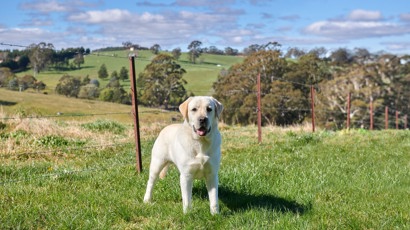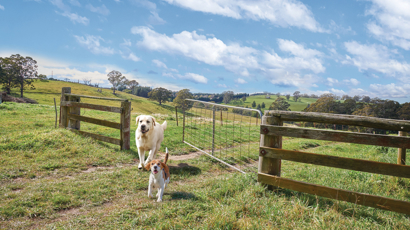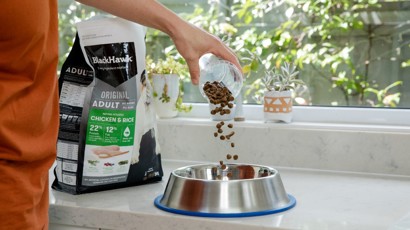Weight Checks for Adult Dogs
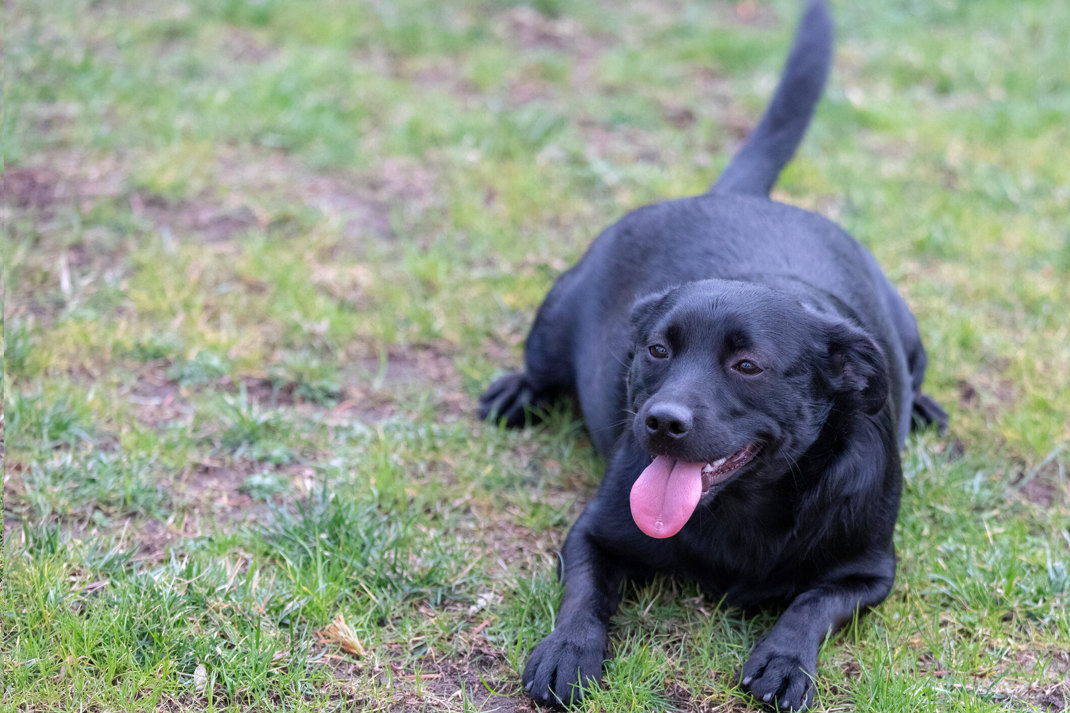
It’s an age old marker of good health: how we (and our pets) fare on the weighing scales. Without delving too deep into the trends we’re seeing across human and pet populations, the many contributors to an increasing waistline and the consequences, it’s best to know that WE can take control of ‘the weight situation’, and with foods such as Healthy Benefits Weight Management , we’re hoping that the situation never gets out of hand.
‘Every weight management journey is unique’, however we’ve managed to create a product to ‘slim down’ on the confusion and bring you and your dog a diet that makes it as easy as possible to support their long-term health.
However, let’s first assess your pet’s weight and gauge the need to prioritize weight management by means of a step-by-step weight check, which is best paired with a body condition score, detailed below:
PREPARATIONS:
-
- Looking back: Keep your dog’s ideal weight and body condition in mind. When were they looking their healthiest and living their best life? Picture them at the peak of their activity and when they had the balance just right and take note of their weight (in kilograms) at that point. Write it down in big numbers: as a good reference for the figure you’d like to keep to.
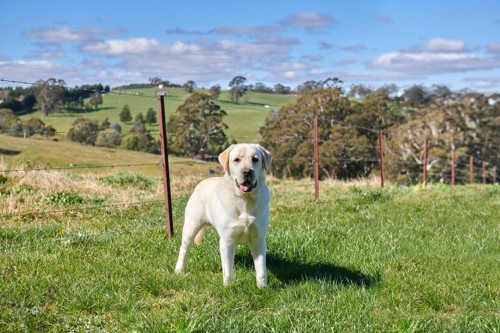
You may even feel that they’re perfect now, but many refer to the time when they have just finished growing. Dogs are rarely carrying excess weight at this time, given the number of calories dedicated to bodily growth and development.
- Knowing ‘normal’: If you’re the pet parent of a pure-breed dog, you’ll have a good idea of their ‘normal body shape. Just the same as we don’t expect a Dachshund to look like a Labrador, we should be wary that a Pug puts weight on around their neck and shoulders and the Beagle tends toward an abdominal spread. Designer- and cross-breed owners will have a good idea too; this is all about having the ‘healthy silhouette’ in your mind when it comes to weight checks.
- Remembering what’s ‘healthy’: Think not just about ideal weight in terms of kilograms and the shape of their figure, but also the lives that our dogs lead when they’re most healthy. For some this might mean rushing around a farm full pelt, for others it’s an intense frisbee session in the park. For others, it means going out for a brisk walk 4 times a day or keeping up with the grandchildren. ‘Healthy’ is about maintaining and sharing a lifestyle, and I often remind pet parents that this is what we’re aiming to achieve when undertaking weight management, not a number on some scales.
- Important notes:
- If you’re suspicious they’re carrying too much weight, have it double-checked and verified by your vet. While weight-y conversations can be difficult, they’re more valuable than pretty much any of the others at the vets, given the avoidance of some serious diseases, increased life-span and improved quality of life that a long term fitness plan will bring.
- Don’t undertake a weight management program if your puppy is still growing. Young pups have specific energy needs that shouldn’t be denied, so that’s another matter for discussion with your vet.
BODY CONDITION SCORING:
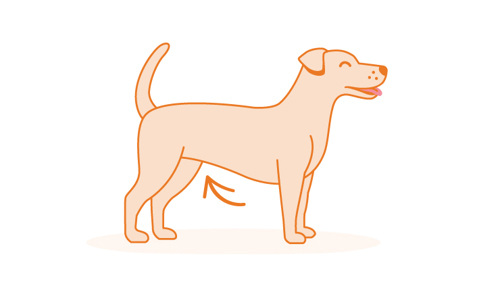
-
- Visual: Side view - step a few metres away from your dog while its standing side-on to you. You’re looking for what’s called a ‘belly tuck’- where the body travels in a straight line from the end of the rib cage, up, diagonally to the ground, into the inside of the hips (where your dog’s bladder is sitting, between their legs). In a lean dog, there is no abdominal fat in this area, and you’ll see a lovely straight line whereas it’ll become curved and sometimes even a line that’s horizontal, and parallel to the floor in a dog that’s carrying too much. Have a look around their head and neck, and rump too: large amounts of bulk can be seen there too.
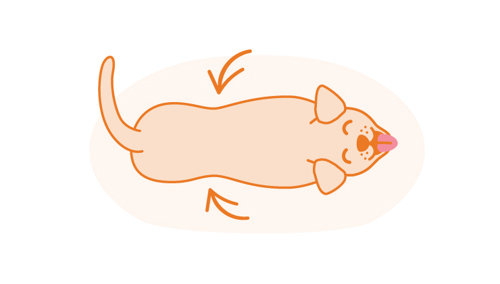
-
- Visual: Top view – looking from above (many pet parents stand with their dog between their legs), you should be able to see an inward dip at the level of their waist, in the region between the end of your dog’s rib cage and their pelvis or hip joints. If dogs ‘fill out’ in this area you won’t see an inward inflection at all, and sometimes even an outward bulge.
*NB: these visual assessments are great for a short-haired dog, but a shaggy or curly one will be a challenge, so that’s why we get our…
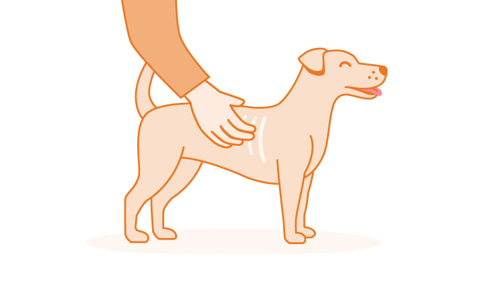
- Hands on: Ribs – with what’s been described as a ‘feather light touch’ (aka no pressure at all), draw the very tips of your fingers backwards on either side of their rib-cage. Do this a few times at a 900 angle, and note whether you can actually feel the ribs themselves. Can you feel bony ‘bumps’ as your fingers travel across each of their ribs? If not, then some excess weight is likely present.
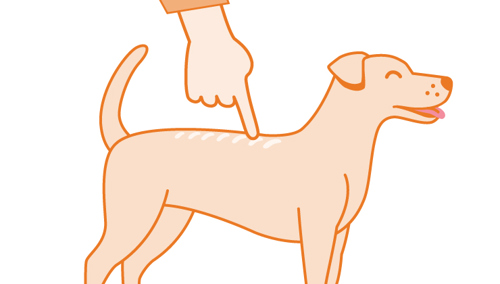
- Hands on: Spine – with a similar gentle pressure, your fingers should go on a bit of a bumpy ride as they travel down your dog’s back-bones. There are bony upward peaks on each and every one of the bones that come together to form their spine, and in a lean dog, we should feel these without putting too much downward pressure to feel them.
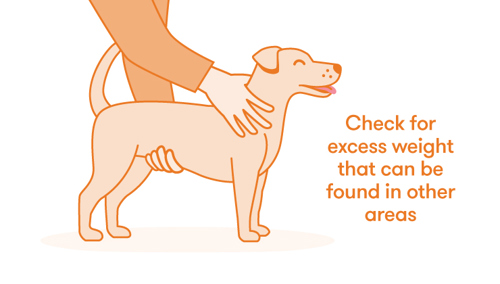
- Hands on: Rest-of-body – confirm your first two measures by feeling for the ‘belly tuck’ noted above and noting whether their waist travels inwards between the ribcage and back legs. While you’re there, it’s not a bad idea to feel around the neck and gauge whether there’s a softer-than-muscle coverage of fatty tissue anywhere else.
- Adding a score: Once you’ve done all of the above, you may want to give your dog a score using a verified system like the 1-9 scale WSAVA Body Condition Score. These scoring systems are what vets and nurses use to determine whether a weight loss (or sometimes gain) plan is required. Take note of your score and take it to your vet’s if you feel that they’re at a 6/9 or above.
FINALLY:
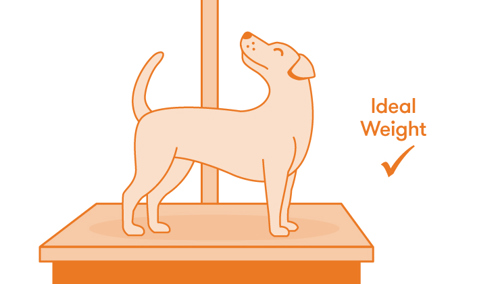
-
- Take it to the scales: Notice we’ve done all of this without touching the weighing scales. We do this because there’s no ‘perfect number’ for all dogs. Breed-weight charts can go some way in helping us identify an issue, but a 35kg Labrador might be a lean, tall and wide-set male, or a short, small-framed but morbidly obese female Lab. Once you’ve done all of the observations above, pop them on the scales to get a picture of the numerical direction you’d like to travel to get to that ‘ideal’ weight.

